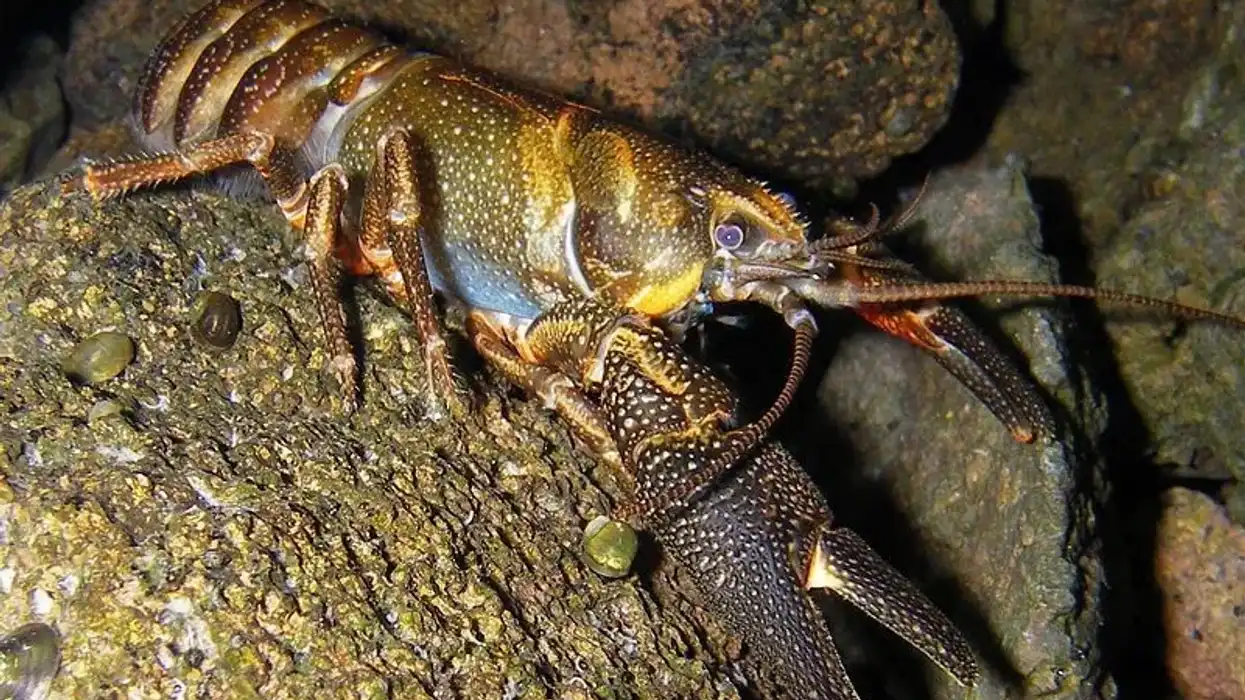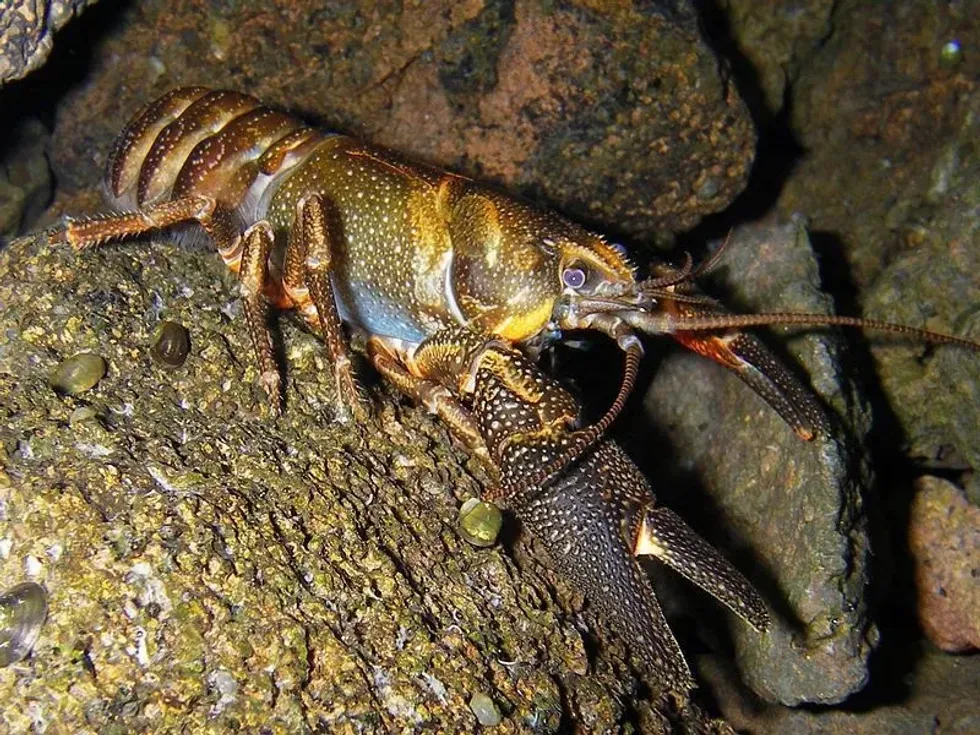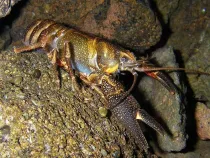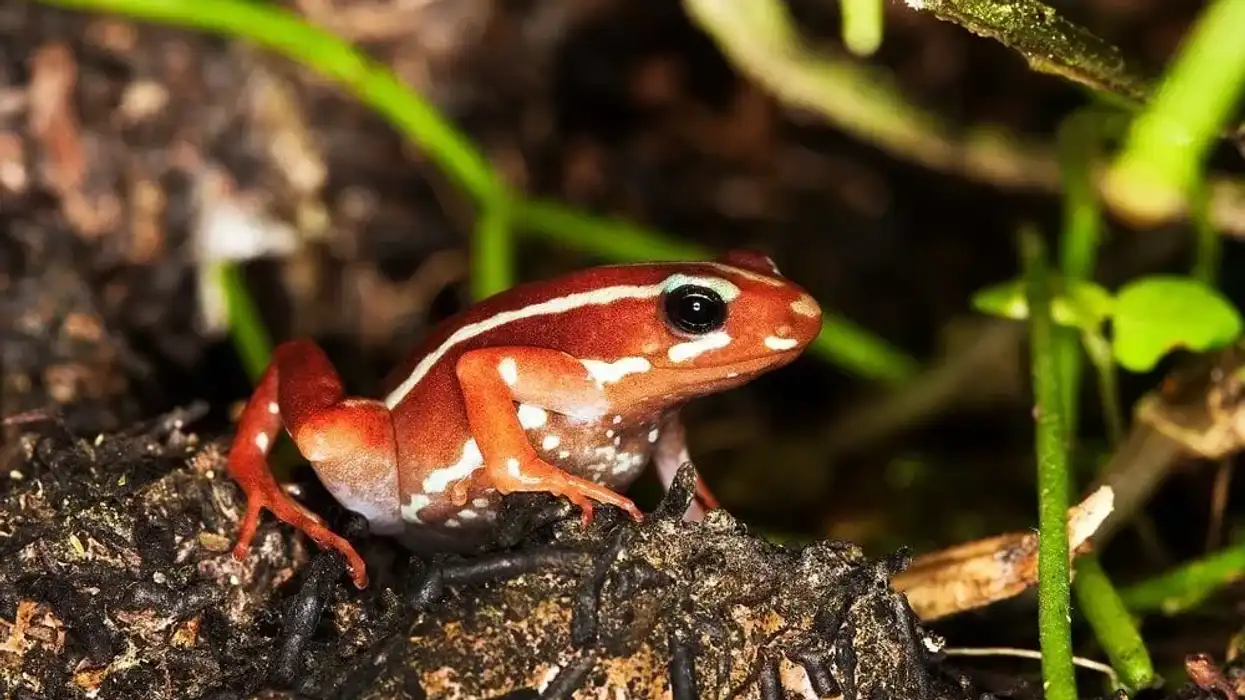Fun Shasta Crayfish Facts For Kids
The Shasta crayfishes are one of the most interesting freshwater animals.
They have a lot more personality than you would think from looking at them and can be really clever as well! They live in watery habitats like a pit river, but they may not always stay there because their relatives include crabs that love to walk on land too.
They eat all sorts of things like plants, worms, snails, or anything else around so it's important for people who fish crayfishes to remember how difficult catching them is - if you get an empty trap then chances are good your bait was stolen by another hungry animal before reaching the bottom where these cool creatures hang out.
In addition to being used for food, the Shasta crayfish has been studied extensively because it can regenerate lost claws if they're not too badly damaged - which means more research into how this works could lead to new treatments for human ailments such as arthritis!
Shasta crayfish are so-named because their range extends from the Shasta Pit River to Southern Oregon.
They’re one of six species native to California and thrive in a number of environments, including cold water high up in mountain streams all the way down into hot springs at lower elevations!
Though they're classified as Critically Endangered species, the population has been doing better than expected since being put on the Endangered Species list back in 1996 due to pollution and over-fishing of their habitat.
They have three main features which distinguish them from other species of crayfish: a bronze or dark brown tan shell, wedge-shaped tail fins with serrations on each fin ray, and two pairs of claws where most crustaceans only have one pair.
For more relatable content, check out these ghost shrimp facts and mantis shrimp facts for kids.
Shasta Crayfish Interesting Facts
What type of animal is a Shasta crayfish?
The Shasta crayfish (Pacifastacus fortis) is a type of fish and wildlife native and endemic to California.
What class of animal does a Shasta crayfish belong to?
The endangered Shasta crayfish with the scientific name Pacifastacus fortis, belong to the class Malacostraca just like other animals like a shrimp!
How many Shasta crayfish are there in the world?
In the world, there are approximately 10 Shasta crayfish populations. There could be between 50-5000 of these crayfish. These unique creatures have a black open-mouthed mask and pincers that resemble tweezers for hands.
Where does a Shasta crayfish live?
The endangered Shasta crayfish (Pacifastacus fortis) is only found in California which has rich fish and wildlife. It lives near the water and can be seen crawling out of ponds, lakes, rivers, streams, or any other body of river they inhabit.
What is a Shasta crayfish's habitat?
Shasta crayfish (Pacifastacus fortis) are typically found living in rocky waterways where they take cover from predators and bask out of the sun to warm themselves up on rocks in a pit river or even under logs while staying cool with their streambed homes’ constant current.
Who do Shasta crayfish live with?
The endangered Shasta crays fish and wildlife spend their whole life in water, living amongst other shrimp-like creatures in a pit river that are just like them and live together as one big community on the riverbeds where they can find fresh drinking water to drink every day of their long lives.
How long does a Shasta crayfish live?
The lifespan for this fish and wildlife, Shasta crayfish (Pacifastacus fortis) can vary as they live from 5-10 years, which means that the average life expectancy of this crustacean is 7.5 years. This allows them to generally reach sexual maturity before dying and enables their offspring to also grow into adults during their lifetime too!
How do they reproduce?
Shasta crayfish (Pacifastacus fortis) species and populations of the class Malacostraca are not the most social creatures, but they do enjoy the company. Females will lay eggs as soon as their full-grown and leave them on the bottom of a stream or lake for males to fertilize and then carry around until hatching time.
Females have been known to hide their egg clutches under rocks if feeling threatened by large animals like lake trouts that may eat their babies before they hatch!
What is their conservation status?
The Shasta crayfish (Pacifastacus fortis) is on the verge of extinction. In fact, its status is Critically Endangered species that need conservation from humans to survive! What will we do without this beautiful creature?
Shasta Crayfish Fun Facts
What do Shasta crayfish look like?
The endangered Shasta crayfish (Pacifastacus fortis) species of the class Malacostraca have a red-brown to orange hue with white marks lining their backs and sides.
The carapace (body) of the Shasta crawfish is long, narrow, and covered in spines all along its backside that serves as protection against predators. They are similar in shape to blue crabs species but lack large claws or pincers on either end.
The placid crayfish (Pacifastacus leniusculus) is dark brown in color and has a similar habitat site to that of a Shasta fish species.
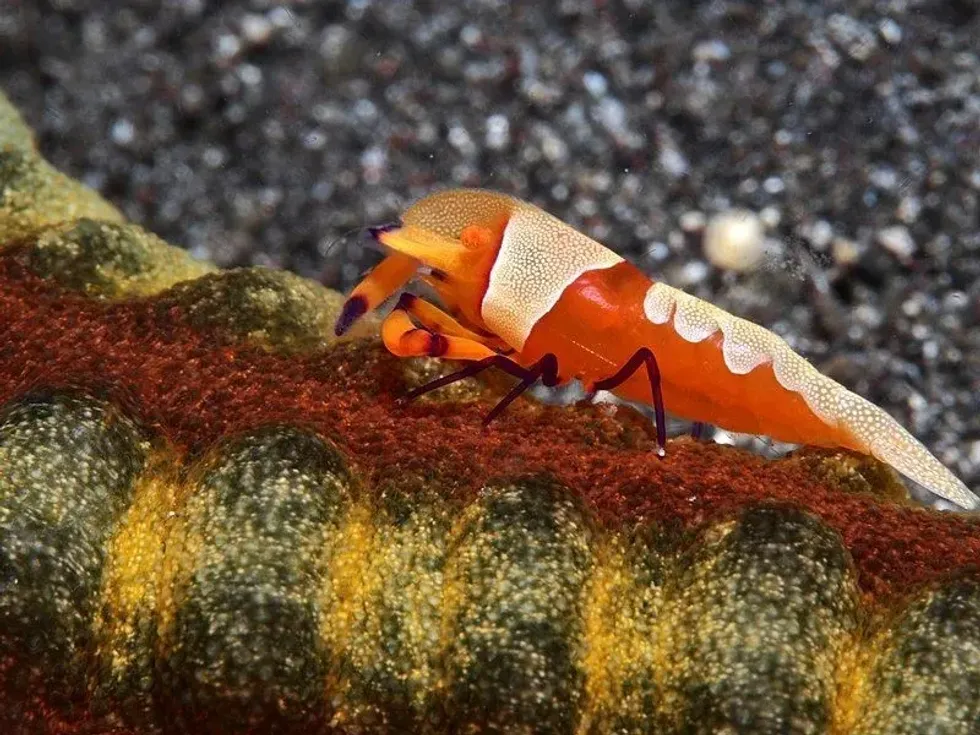 *We've been unable to source an image of a Shasta crayfish and have used an image of an emperor shrimp instead. If you are able to provide us with a royalty-free image of Shasta crayfish, we would be happy to credit you. Please contact us at hello@kidadl.com.
*We've been unable to source an image of a Shasta crayfish and have used an image of an emperor shrimp instead. If you are able to provide us with a royalty-free image of Shasta crayfish, we would be happy to credit you. Please contact us at hello@kidadl.com.How cute are they?
The Shasta crayfish (Pacifastacus fortis) is quite cute looking - it has large, wide-eyed black pupils that give the creature an endearing appearance while its thin body gives it more agility than most other crustaceans like lobsters! It's sad that they are classified under Critically Endangered species.
How do they communicate?
These endangered Shasta crayfish (Pacifastacus fortis) of kingdom range Animalia are more than just interesting crustaceans, they have a unique form of communication. They use their claws to tap against rocks and each other in order to communicate whether there is food nearby or when it's time for them all to go back home.
How big is a Shasta crayfish?
This small endangered species crustacean (Pacifastacus fortis) is native to the streams of Southern California. They are typically between 1-2 in (2.5-3 cm) long and have a variety of colors including brownish reds or dark orange with or without stripes on their back legs.
How fast can a Shasta crayfish swim?
The endangered Shasta crayfish (Pacifastacus fortis) can swim at a maximum speed of 3.3 ft/s (1 m/s), which means that they are one slow creature. They are commonly found near streams and waterways where they prey on small insects like flies or worms.
How much does a Shasta crayfish weigh?
The Shasta crayfish (Pacifastacus fortis) endangered species is one tiny crustacean! These little guys, Pacifastacus fortis, only weigh about 0.1-0.2 lb (60-110 g) and can be found living briefly outside on warm days when it floods its home with fresh rainwater near roots around rocks.
But don't worry - these critters are harmless to humans because they primarily eat algae and other microorganisms such as plankton rather than plants, animals, or insects like bigger shrimp do!
What are the male and female names of the species?
The male and female species of the endangered Shasta crayfish (Pacifastacus fortis) wildlife populations of a river habitat have no sex-specific name in common usage. Both go by the name Shasta crayfish.
The Shasta crayfish (Pacifastacus fortis) is a fascinating creature. Male and female species are more or less similar in shape and size, which can make it hard to identify the sex of an individual at first glance.
However, male specimens tend to have darker coloration on their claws than females do - so if you see one that looks like they're wearing black gloves with long finger-tips then congratulations! You've just found yourself a little dude who's ready for your unconditional love!
What would you call a baby Shasta crayfish?
One of the most endearing and lovable species in the world is the baby of a Shasta crayfish (Pacifastacus fortis) species of the river habitat, known as a baby crayfish. The Pacifastacus fortis are so cute you cannot help but love them, especially during spring or in October, with their tiny bodies and pincers that look like little needles!
What do they eat?
Like many other species of crayfish, Shasta crayfish and wildlife have a wide variety of prey. These species of the river prefer to feed on periphyton and small fish but will also consume invertebrates such as snails in an attempt to avoid predators like bass or trout.
Are they dangerous?
The Shasta crayfish (Pacifastacus fortis) species do little to harm humans because they spend most of their time holed up deep underwater or under rocks where human activities usually don't reach them. Moreover, these species also eat only small species and plants and do not crave human flesh!
Would they make a good pet?
The Shasta crayfish (Pacifastacus fortis) species is a cool pet that would be great for the owner to explore their interest in enthralling tank mates. Since they are critically endangered, it's unlikely we'll ever find out if this creature (Pacifastacus fortis) could make an awesome new friend or not! Their conservation is absolutely crucial!
Did you know...
The crayfish's natural habitat site is being threatened by climate change, pollution, deforestation, fewer conservation efforts, and drought.
The decline in the population of frogs has contributed to this species' vulnerability because it provides a necessary food source for them; when there are fewer frogs living near waterways where these creatures live then they will also be preyed upon more often at night and in spring.
This leads to fewer reproduction cycles which result in an even lower number of offspring that can survive on their own.
The largest crayfish species Pacifastacus of the kingdom range Animalia ever caught in river habitat, the Tasmanian giant freshwater crayfish is from Australia. This crustacean can weigh up to 12 lb (5.5 kg) and reach about 1 ft (0.3 m) in diameter.
According to scientists, the introduction of crayfish (Pacifastacus fortis) species into California’s freshwater streams happened in two separate ways. One is that they were introduced indoors as a means for trapping fish and catching other rocky aquatic life like frogs, crabs, or shrimp from underneath rocks during spring.
The second case was when people dumped the species Pacifastacus outdoors in a river during floods.
What's the difference between crawfish and crayfish?
The name 'crawdad' or 'placid crayfish' can be confusing because it's often used interchangeably by different regions of North America; however, there is actually one key difference between these water media species Pacifastacus of the kingdom range Animalia: size!
The crawfish species versus signal crayfish species debate has been around for years with people debating if one type tastes better over another - some say that lobsters and crabs both taste sweeter because they're saltier; others argue that this isn't true for all dishes since certain cooking methods can affect flavor profiles negatively (particularly boiling).
The signal crayfish is smaller, and their tails have a pointy end.
Crawfish species can be found in seven different colors - volcanic red (most common), orange, pinkish-red, or purplish-gray to black with green spots.
Are crayfish native to California?
An aggressive signal crayfish (Pacifastacus fortis) species Pacifastacus of the kingdom Animalia is native to northern California and was introduced here many years back.
And if you head north of Los Angeles County in summer or spring, it's possible that you'll spot a few signal crayfish down by your local creek or pond.
The placid crayfish species (Pacifastacus leniusculus) can live in water media especially during summer or spring where it is too cold for other animals because they have a variety of adaptations that keep them insulated and warm as lobsters or crabs do on land.
Here at Kidadl, we have carefully created lots of interesting family-friendly animal facts for everyone to discover! Learn more about some other fish from our pumpkinseed sunfish facts and black ghost knifefish facts pages.
You can even occupy yourself at home by coloring in one of our free printable Shasta crayfish coloring pages.
We Want Your Photos!
More for You
Bachelor of Dental Surgery, Master of Public Health

Iram AshfaqBachelor of Dental Surgery, Master of Public Health
With a Bachelor's degree in Dental Surgery from Shaney Institute of Health Sciences and a Master's degree in Public Health from Imperial College London, Iram is a highly qualified and accomplished writer from Srinagar, India. Over the course of a year, she has acquired multiple writing certifications, focusing on health sciences and research studies. Prior to joining Kidadl, Iram gained valuable experience working as a content writer for Indian firms and interning at a New York-based company. Her expertise and passion for writing shine through in her ability to create compelling content across a variety of topics.
Disclaimer
1) Kidadl is independent and to make our service free to you the reader we are supported by advertising. We hope you love our recommendations for products and services! What we suggest is selected independently by the Kidadl team. If you purchase using the Buy Now button we may earn a small commission. This does not influence our choices. Prices are correct and items are available at the time the article was published but we cannot guarantee that on the time of reading. Please note that Kidadl is a participant in the Amazon Services LLC Associates Program, an affiliate advertising program designed to provide a means for sites to earn advertising fees by advertising and linking to Amazon. We also link to other websites, but are not responsible for their content.
2) At Kidadl, we strive to recommend the very best activities and events. We will always aim to give you accurate information at the date of publication - however, information does change, so it’s important you do your own research, double-check and make the decision that is right for your family. We recognise that not all activities and ideas are appropriate for all children and families or in all circumstances. Our recommended activities are based on age but these are a guide. We recommend that these ideas are used as inspiration, that ideas are undertaken with appropriate adult supervision, and that each adult uses their own discretion and knowledge of their children to consider the safety and suitability. Kidadl cannot accept liability for the execution of these ideas, and parental supervision is advised at all times, as safety is paramount. Anyone using the information provided by Kidadl does so at their own risk and we can not accept liability if things go wrong.
3) Because we are an educational resource, we have quotes and facts about a range of historical and modern figures. We do not endorse the actions of or rhetoric of all the people included in these collections, but we think they are important for growing minds to learn about under the guidance of parents or guardians.
